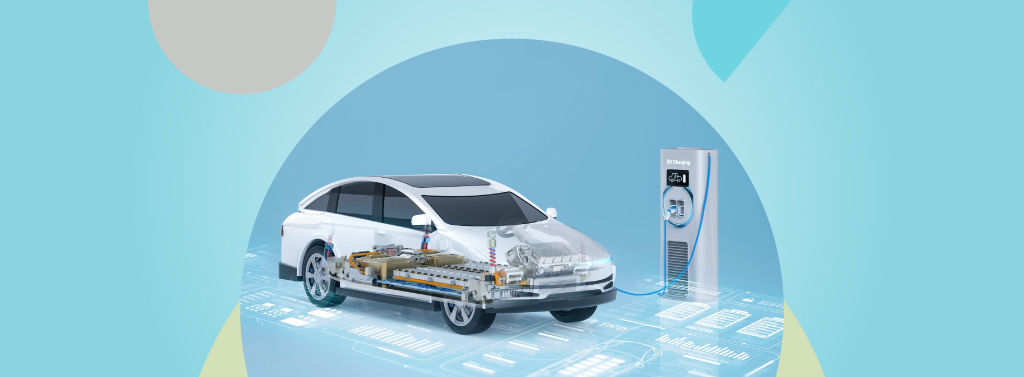Electric vehicles (EVs) are gaining popularity in global transportation due to their potential to reduce greenhouse gas emissions, improve energy efficiency, and lower operating costs. A battery management system (BMS technology) regulates the behavior and condition of the battery, which is a critical component that impacts the efficiency and uptake of electric vehicles.
With a projected CAGR of 19.8 percent between 2023 and 2028, the worldwide automotive battery management system (BMS) market is anticipated to expand from 4.7 billion USD in 2023 to 11.7 billion USD in 2028.
The significant market growth underscores the crucial role of BMS innovation in advancing the efficiency and lifespan of EVs, reflecting its growing importance in sustainable transportation.
This article will take a look at thе most recent innovations related to BMS technology that enhances thе performancе and еfficiеncy of еlеctric vеhiclе battеriеs. Several patents have been filed that deal with advances in intelligent battery junction boxes (BJBs), and wireless battery management systems (BMSs).
The BMS Technology Innovations: An Analysis
These recent patents showcase cutting-edge BMS technology that aspires to enhance the efficiency and performance of EV batteries. Let us go over some details on the inventors, assignees, claims, and benefits of each patent for further explanation.
New battery chemistries
One of the notable challenges in BMS technology is to adapt to the different characteristics and requirements of various battery types, such as lithium-ion, nickel-metal hydride, lead-acid, and others.
One of the patents that addresses this challenge is as follows:
The Texas Instruments patent describes an innovative charge protection circuit for battery packs, particularly for high-capacity batteries like Nickel Cadmium and Nickel Metal Hydride.
The patented technology focuses on safety and longevity by detecting full charge and initiating current shunting to prevent overheating and potential explosion risks during fast charging. This system also mimics the characteristics of Nickel Cadmium batteries, allowing the use of simpler charging devices and enhancing battery life.
Advanced Estimation Methods
Another challenge in BMS technology is to accurately estimate the battery state and behavior, such as the SOC, SOP, and SOH, using various algorithms and sensors.
One of the patents that address this challenge is as follows:
The patent, filed by Robert Bosch GmbH, claims a method that can train a neural network using historical data and current measurements and use it to predict the SOC of the battery.
The method includes the following steps:
- Detecting the current following in and out of the battery.
- Providing a charge differential by integrating the accumulator current over time.
- Updating a measurement state of charge by adding the charge difference to the measurement state of charge.
- Deriving an estimated state of charge from a unique relationship between the measurement state of charge and the actual state of charge.
This patent can improve battery performance and optimization by providing a more accurate and robust estimation method that can adapt to different operating conditions and battery types.
Evaluating the Impact of BMS Technology Innovation on EV Performance
Here are some quantitative or qualitative data or evidence to support the claims, such as CO2 emission reduction, EV adoption rate, and customer satisfaction.
Reducing charging time
The charging time depends on the battery type, size, and state, as well as the charger type, power, and compatibility, which are influenced by the BMS technology. Silicon innovations are enabling a shift toward a more modern architecture known as the intelligent BJB. The BMS prevents damage to the battery, keeps it in working order, and increases its lifespan with smart charging and discharging algorithms. It also anticipates the battery’s remaining life and keeps it protected from damage. For example,
“Artificial intelligence-based smart electric vehicle battery management system” is a patent that focuses on machine learning technology for developing a self-reconfigurable, flexible, and reliable model for battery management of electric vehicles.
Improving safety and reliability
Safety and reliability depend on the battery’s state and behavior, such as voltage, current, temperature, and impedance, which are monitored and controlled by the BMS. Effective sensor fault detection is crucial for the sustainability and security of electric vehicle battery systems, especially lithium-ion batteries, that allow deep learning-based detection and the classification of faulty battery sensors and transmission information. For example:
Global Enabling Battery Management Systems (BMS) Technology Development report covers key stakeholders involved in the development of innovative solutions for modern BMS controllers, an analysis of the global patent landscape for modern BMS technologies, the key patent owners/applicants, and the major areas of research.
Lowering cost and environmental footprint
The cost and environmental footprint depend on the battery type, size, and lifespan, as well as the energy consumption and emission, which the BMS influences.
Advanced predictive maintenance systems are being linked with BMS in electric vehicles. These algorithms utilize real-time data to predict when battery components would necessitate repair or replacement, hence decreasing client expenses for maintenance.
Another technique, named the passive cell balancing technique, uses the idea of discharging the cells through a bypass route that is mostly dissipative. It is simpler and easier to implement than active balancing techniques as the bypass can either be external or integrated — keeping the system more cost-effective.
“Further Cost Reduction of Battery Manufacturing” is a research paper that presents process variability in battery manufacturing and provides other manufacturing directions that can provide further cost reduction of manufacturing Li-ion and solid-state batteries.
Key Takeaway
The landscape of Battery Management System (BMS) technology is rapidly evolving, marked by patents that address critical challenges in electric vehicle (EV) battery optimization. These innovations, spanning new battery chemistries, wireless BMS, and advanced estimation methods, signify a paradigm shift in enhancing EV performance and efficiency.
As we evaluate the impact of BMS technology, the evidence suggests notable reductions in charging time, improved safety and reliability, and lowered costs and environmental footprints.
Review the resources and uncover the future of electric mobility through the lens of cutting-edge BMS innovations.
